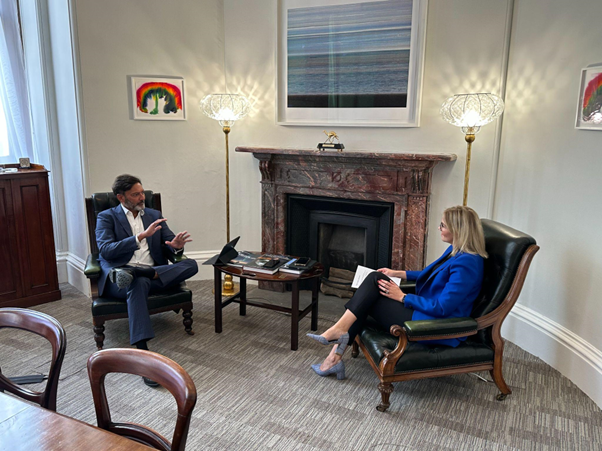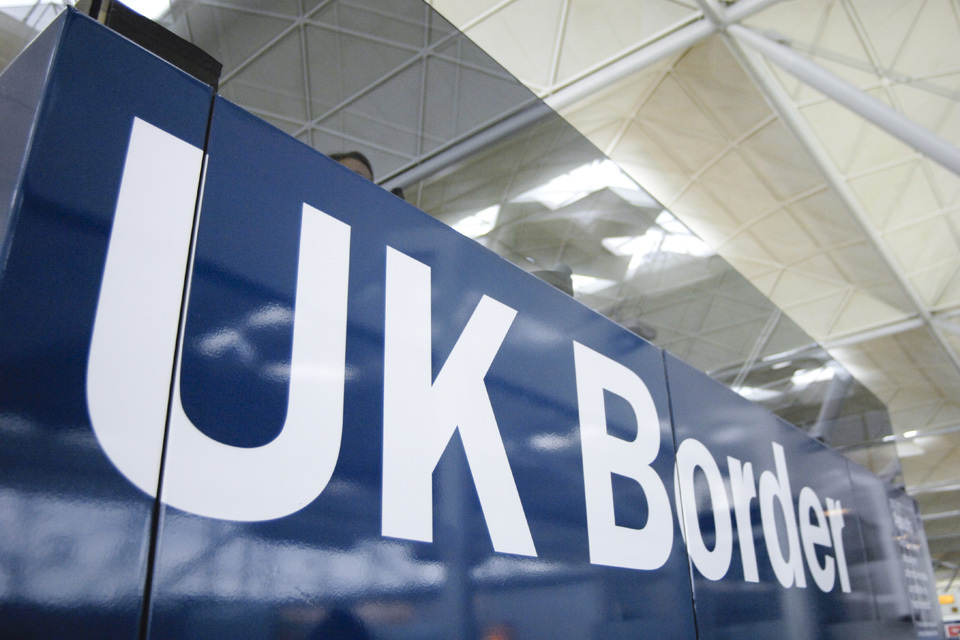The Government Digital Service recently renewed its collaboration agreement with an overseas counterpart whose achievements it would surely love to emulate. PublicTechnology finds out more.
Credit: Pixabay
When the Government Digital Service first signed a collaboration agreement with its Singaporean counterpart, Theresa May was prime minister, the first case of Covid-19 was still six months away, and the England women’s football team lost 1-0 in a Brighton stadium where 10,000 tickets remained unsold.
For good and for ill, a lot has changed since then.
But the relationship between GDS and GovTech Singapore has endured. The initial memorandum of understanding between the two agencies was recently renewed for a further three-year term, with the aim of extending and strengthening their co-operation.
Since 2019, the two countries have engaged in “knowledge exchanges” focused on how digital services can be made accessible and inclusive, and designed around citizens’ lives – rather than the structures of government. Notes have also been compared on the two nations’ cloud strategies and work has begun on forging a path to mutual recognition of government-backed frameworks for digital-identity documents, while GDS has supported a review of data security processes in Singaporean public-sector entities.
Visiting London to sign the renewed MoU, Kok Ping Soon, chief executive of GovTech Singapore, tells PublicTechnology that, while collaborative with one another, the two agencies’ approaches in the last few years have proceeded down “parallel paths”.
GDS, which is currently engaged in creating the first-ever GOV.UK app, through which users will ultimately be able to access a comprehensive range of government services, would appear to be a little less far down the road than its Singaporean counterpart.
There are, of course, contextual reasons that make progress more complicated in this country.
Singapore is a city state of about six million people, with a government that has been led by the same, socially conservative party for 63 years and counting.
“People who are digitally excluded… can now walk in into the ServiceSG centres, and have the same sort of experience as the citizens would get on the digital shop front.”
Kok Ping Soon, GovTech Singapore
Politics in the UK is, clearly, somewhat knottier. And, whoever is in in charge, it is typically set against a wider landscape soundtracked by a constant low hum of anti-government dissent and protest – something which has typically accompanied the failed attempts of various administrations through the years to introduce mandatory national identity cards.
The incumbent national ID system of Singapore, meanwhile, has played a key role in underpinning the digital services of its government, and enabling citizens to connect to them – as well as to a growing array of private sector entities.
The Singaporean government’s LifeSG app, which offers more than a hundred services, grouped by areas such as health, parenting, and retirement – rather than by government department – was first launched in 2018.
“We recognise that citizens do not interact with government very regularly,” says Dominic Chan, head of GovTech’s digital identity programme. “They will usually come to us at a key moment of life… and, in those moments, we want to make it as seamless and frictionless as possible for them.”
Prior to creating the LifeSG platform, research conducted by the tech agency identified three main difficulties citizens previously faced in their interactions with the state, the first of which is the departmental boundaries that create siloed services.
The second issue was “poor discoverability” of the services they required.
Chan says: “We asked citizens: ‘how do you search for certain services when you need them?’, and the most common response we always got was Google. Which is okay, and we can, of course, take the approach of trying to get better at SEO (search engine optimisation). But, given the current landscape – where there are so many scams or phishing sites out there – I think there’s a certain amount of risk that we expose citizens to, if they try to figure this out themselves. If we can put all content together in a trusted place – and be able to make that easier for them to discover – I think that’s really much better.”
Bringing services together in one place also allows for tighter integration which, in turn, enables greater personalisation for users, allowing the government “to present the right information to citizens at the right time,” according to Chan.
This then helps to address the third issue previously faced by service users, he adds.
Three years
Length of the initial MoU between GDS and GovTech Singapore – and the length of time for which it has been renewed
3.5 million
Number of users of the SingPass digital identity app, equating to 75% of all possible registrants nationwide
100%
Singaporean government target to be achieved by next year for electronic completion of government incoming and outgoing payments
2,000
Number of services – delivered across 700 government and commercial organisations – that use the SingPass digital identity for user login
“A lot of times, citizens are not aware that they’re entitled to certain benefits, or there are certain existing services that they could use that would make life a lot easier for them,” he says.
The GovTech exec points to the example of the government’s current suite of digital services for new parents – which did not exist 14 years ago, when Chan and his wife had their first child.
“We had to figure out where to go for registration. So, I went downstairs, and I had to get a nurse to help me fill out the forms and tell me where to submit them,” he says. “And, thereafter, I wasn’t aware until my friends told me that, actually, we were entitled to a ‘baby bonus’ [payment] I had to go to another agency to apply for. And, before doing that, I had to apply for a child development account. All of this actually took a lot of navigation and asking friends.
“But, fast forward to today: this whole process can be completed in 15 minutes, in the comfort of the ward – where parents should be spending more time with their child, rather than grappling with government services. These three processes are now all woven together in a single place: LifeSG.”
ID high
Underpinning the cross-government services app is the SingPass digital identity system, which GovTech claims has 4.5 million registered users. The system is powered by information from the country’s national identity card programme which citizens are required to register for within a year of their 15th birthday.
SingPass App registrants can use the digital login platform to access 2,000 services delivered by more than 700 organisations, across both government and the private sector.
Again, this is an area where the UK has similar ambitions – but is yet to make quite as much progress.
The GDS-developed One Login system is intended to provide government departments with a single unified means through which citizens can access services. It will eventually replace an existing patchwork of almost 200 separate accounts that can be used to log in to services, incorporating 44 different sign-in methods. One Login is due to go live this month, on a pilot basis, with its first five services. Departments are required to draw up an adoption roadmap by March 2023, and the target is for comprehensive uptake across government by 2025.
Even if it is a few years behind its partner in the MoU alliance, the good news for the UK is that, if it makes good on its ambition of establishing a universal digital identity, the benefits for citizens and government can proliferate from there, Chan says.
Embedded within SingPass is a MyInfo profile for each citizen, which enables people to view – and, where applicable – edit all the information held on them by various parts of government. This include data such as addresses, passport information, demographic details, and family relationships. Updates can be automatically shared across agencies and, with the user’s content, can also be used as part of authentication services in areas such as financial services.
“MyInfo is like a sister product of SingPass,” Chan says. “We moved on to solve another problem, and to enable citizens to tell us things once only. So, if you were to tell the agency responsible for [keeping records of] your address, then all the other agencies – when they need to send a letter or reach out to you – can then go to the ‘single source of truth’, and reach you accordingly.”
The collation of all this data in one place also means that using SingPass to log in to a service means that all information is pre-verified, and can be automatically used to populate the relevant fields on a registration form – whether provided by the government or one of the many commercial entities that incorporate the system in their login process.
The utility of the data repository has helped drive uptake of the SingPass app which, although linked to the government’s mandatory identity card scheme, is a discretionary optional extra, according to Chan, who claims that about 83% of over-15s have registered for the software – equating to three oout of every four eligible users.
“Something helpful to us in terms of growing [SingPass] was that we were focused on solving citizens’ problems,” he says. “We never really went out there to wave a flag to say that we were introducing digital identity – because our focus was never that; our focus was to solve very specific problems one step at a time.”
A new blueprint
Alongside the launch of the LifeSG app in 2018, GovTech also published a Digital Government Blueprint, which laid out the government’s ambitions “to better leverage data and harness new technologies”, and set targets against which progress could be measured.
This includes more than 90% of services “completed digitally from end-to-end”, 20,000 public officials trained in data science and analytics, the delivery of at least 30 “transformative” digital projects, and 70% of eligible government systems moved to a commercial cloud environment. Also included in the plan were 100% targets for the electronic completion of incoming and outgoing payments, the pre-population of forms with verified government data, and the provision of digital options for services which previously required an ink signature.
With the plan’s five-year lifespan concluding next year, GovTech CEO Kok (pictured second from right signning the MoU with GDS head Tom Read second from left) says that his organisation is “on the cusp of reaching” what seemed like “wild KPIs” at the time of the blueprint’s publication.
Looking beyond 2023, GovTech will “certainly be continuing our journey to create more moments-based, more anticipatory services for citizens and businesses” – but also wants to start doing more with emerging technologies.
This includes building on its work with smart sensors and other internet-of-things technologies.
In a country where close to 80% of people live in housing built and managed by the government, GovTech has supported the deployment of personal alert buttons in the homes of elderly residents. The devices – which Kok says have already saved lives – enable users to press a button to issue a immediate distress signal which, along with a recorded description of the problem, will be automatically sent to local support services.
Other planned deployments of IoT tech include working with Singapore’s sports ministry to fit sensors in gyms and leisure facilities, and supporting the efforts of the education agency to install sensors in schools; in both these cases, the technology will be used to enable “predictive maintenance and facility management”, according to the GovTech CEO.
“We are looking for other opportunities to deploy sensors more aggressively in different contexts to improve operational efficiency, improve regulatory compliances and, where possible, to improve the lives of citizens,” he adds.
Artificial intelligence and machine learning is another area of emerging tech where GovTech is ramping up its work. This includes expanding the use of automated speech-to-text tools – which are already used to transcribe proceedings in Singapore’s parliament, and will now be trialled in the courts system.
Singapore’s Ministry of Education is among the pioneers, and GovTech is currently supporting experiments with the use of automated processes to support “adaptive learning” in some schools.
“This is an assistive-learning tool for English language students,” Kok says. “It can do automated marking of written assignments, and pick up common mistakes of grammar and sentence structure, and provide [an immediate] response to the students. The theory behind this is that, the more you get feedback, the more incentivised students will be…. But this doesn’t mean the teacher is out of a job! These low-level corrections right can be done by the automated learning tool, then the teacher can focus on persuasiveness and tone, and how to be more expressive in English. And, very importantly, statistics have been collected, and the teachers can then pace [learning] and know who to target for more personalised education experience.”
Whatever new innovations the two agencies pursue in the years ahead, Kok says that GovTech and GDS share an understanding that the tech is only the beginning of the solution, and that “you need organisations to move alongside” the technological developments to ensure they are delivering the potential benefits.
“We recognise that citizens do not interact with government very regularly. They will usually come to us at a key moment of life… and, in those moments, we want to make it as seamless and frictionless as possible for them.”
Dominic Chan, GovTech Singapore
To which end, Singapore has created a new entity – dubbed ServiceSG – which describes itself as a “government concierge”.
The unit is a joint venture of the government’s Public Service Division, whose remit is to ensure excellence in public-service delivery, and the People’s Association, a body which promotes community initiatives and social cohesion.
ServiceSG operates in-person customer-service centres that, similar to the LifeSG app, offer a means to access all government services in a single place.
“People who are digitally excluded… can now walk in into the ServiceSG centres, and have the same sort of experience as the citizens would get on the digital shop front,” Kok says. “If they call in on the phone, they can also get that. And, if they need to navigate across from the call centre, to the physical centre, to the digital platform – we will know who that customer is. That is omnichannel, integrated service delivery; and, in order to do that, we needed to change the government structure.”
GovTech’s partners in the UK could be forgiven for assuming that a similar revamp of the long-standing structures of Whitehall might be much harder to achieve.
But, then again: a lot can change in just a few years.



